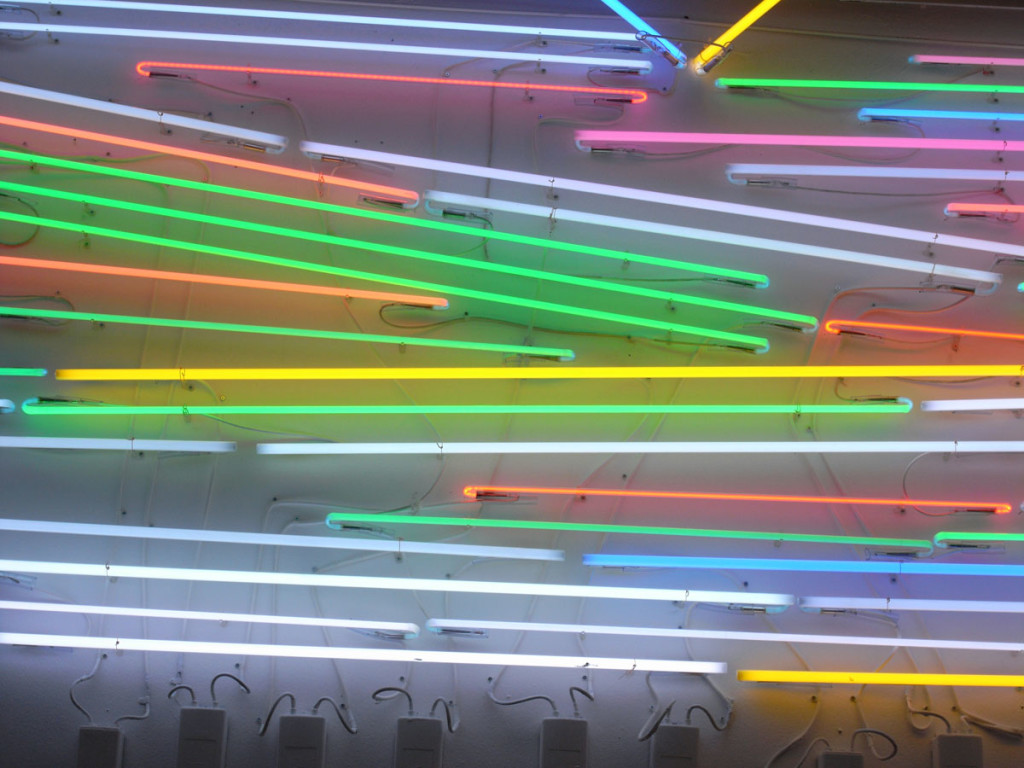Artsonje Center, Seoul, http://artsonje.org/eng/
November 2012 – January 2013
Shinro Ohtake is a Japanese artist working in collage, drawing and installation; he is also known for his involvement in the Japan noise music scene. The show at Artsonje spread over two floors.
The lower floor featured his collage works. These works are an intense cut and paste exercise referring to the post-modern media landscape (or should I say ecosystem?) that we live in. Snippets from newspapers, advertising leaflets, food packages, old photographs… anything thinkable is pasted together to form a multi-layered mish-mash. Some of these compositions are presented in wall-mounted format, while other collages are compiled into large size ‘albums’. Nothing is wasted in Ohtake’s work, even the cutting board with pencil and cut marks are recycled as an artwork. In the centre of the room, there is a large cupboard, also completely covered in snippets of printed image and text. The works on this floor of the exhibition are very intense and multi-layered. One can dismiss them as a pile of rubbish, but one can also dive into them and discover the bits and pieces from which they are made.
The upper floor of the show is a complete opposite to the prior floor. Here, we see a very bright and clean side of Ohtake’s work. Works are smaller in size, rendered in bright neon acryl color on white paper. One series of drawings is in black and white only, referring to comics (but no big-eyed Japanese manga here). The imagery is still drawn from the advertising and mass media sources, but only single elements are selected and carefully re-rendered by the artist’s hand. While the previously mentioned collages work like compilations or catalogues of images, here they have been distilled into a pure and minimal form. The concluding artwork of the show – a site-specific artwork created by Ohtake for the Seoul show is an abstract amalgamation of neon lights mounted to the gallery wall and ceiling, accompanied by two paintings (I think acryl on paper) in neon colors featuring silhouettes of female bodies. The neon lights again seem to be a reduced version of the actual sea of lights that can be found on the streets of Seoul and in this way use a artistic process corresponding to that of the other works on display in this part of the exhibition.
It was surprising to see the two sides of Ohtake’s work so close and in contrast to each other: On one side the ‘messy’ and complex collage works; on the other side the cleaned up and visually appealing drawings/paintings. Even in their minimal appearance, it was still obvious that they are referring to the same source of media images. Even in their difference, I could see how they link back to Ohtake’s artistic thinking and approach. The two poles of the exhibition created both a tension and a balance and entered in a dialogue with each other. The Seoul-specific neon work then created a natural conclusion and connection between these two parts.
